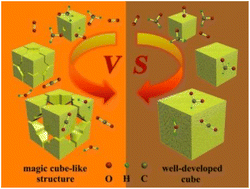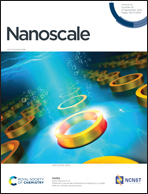Controllable synthesis of magic cube-like Ce-MOF-derived Pt/CeO2 catalysts for formaldehyde oxidation†
Abstract
Controllable synthesis of MOFs with desired structures is of great significance to deepen the understanding of the crystal nucleation-growth mechanism and deliver unique structural features to their derived metal oxides with target catalytic applications. In this study, NH2-Ce-BDC with morphology similar to a second-order magic cube (mc) is facile synthesized via H+ mediation in nucleation and growth stages. The pertinent variables that can greatly influence the formation of magic cube-like structures (MCS) were investigated, in which the concentric diffusion field was found to be one of the key factors. Upon calcination, the derived CeO2 inherits unique gullies and grooves located on the pristine MOFs surface, which is quite useful for atomic layer deposition (ALD) of platinum (Pt) nanoparticles because of strong interaction with MOF-derived CeO2 (mc-CeO2). XPS, H2-TPR, Raman, and in situ DRIFTS characterization results show that there is a stronger interaction between Pt and mc-CeO2 in mc-Pt/CeO2 compared with c-Pt/CeO2 that is derived from the well-developed cubic Ce-MOFs. Furthermore, Pt2+ ions, hydroxyl oxygen, and oxygen defects in mc-Pt/CeO2 account highly for exemplary catalytic activity toward HCHO oxidation.



 Please wait while we load your content...
Please wait while we load your content...